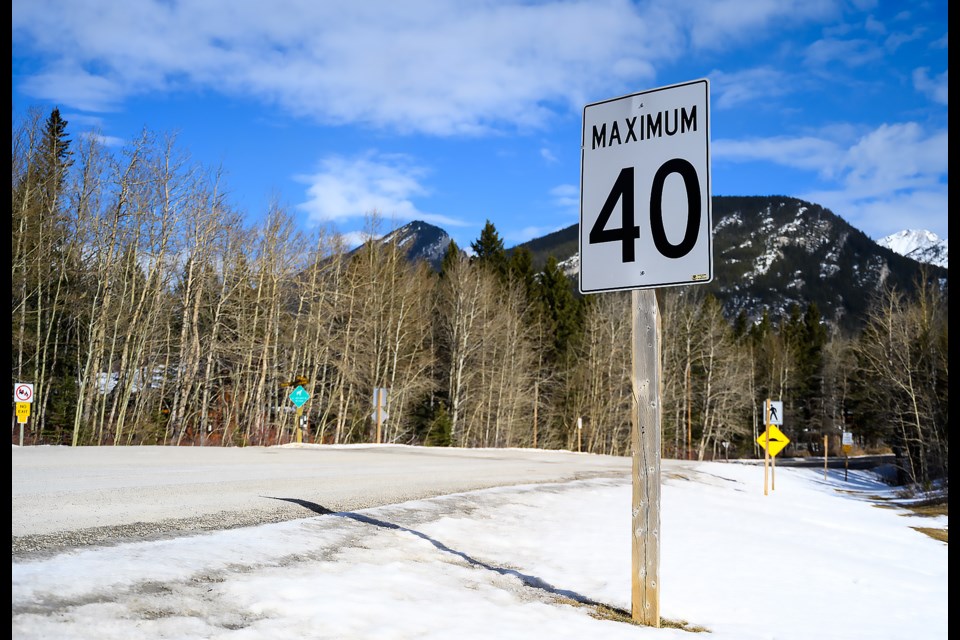LAC DES ARCS – Slow your roll in Lac Des Arcs.
MD of Bighorn council approved a speed limit reduction change to 30 km/h from 40 km/h throughout the hamlet.
A questionnaire sent to residents received 27 responses and almost all were in favour of the change, though many noted they haven’t experienced issues with people speeding in the community.
“The request was originally made by the community association. The majority of responses were in favour of the proposed speed reduction,” said Bill Luka, the MD’s director of engineering and infrastructure.
Some responses to the questionnaire said narrow roads, speed bumps and sightlines, as well as children playing on or near roads, tend to keep vehicles at or under the posted speed limit as is.
“First off, we naturally drive at 30 km/h or less through LDA,” said one resident. “The speed bumps, narrow roads and blind corners make that happen naturally. Also, apart from the occasional yahoo, I haven’t had any issues with individuals driving too quickly in the hamlet. So, if the speed limit is changed to 30 km/h, then no problem from an everyday living standpoint.”
Coun. Rick Tuza asked if administration went to the community and drove around to make its own assessment of whether the change is needed.
“If we didn’t support it, we wouldn’t be proposing the reduction,” said Luka, who noted administrative staff did its rounds through the hamlet.
Reeve Lisa Rosvold asked if the speed limit would change immediately after new signs are posted or if the change would also need to be addressed in the highway and traffic bylaw and come back to council before that occurs.
Luka said the signs would be changed as soon as possible, but the bylaw change would likely take a few months, as it would also need to be run by the MD’s transportation committee.
Tuza expressed concern that newly posted signs not matching a change in the bylaw over the course of that period could present an argument for drivers issued speeding tickets.
“I tend to disagree because if you don’t change your legislation and get it in black and white, it creates a technicality, where if a peace officer writes a ticket, it can be fought in court because the law doesn’t exist,” he said. “Just because we’ve posted the new speed limit, I think there’s a technicality there that could let a person off the hook.
“I just don’t want to be put in a position where a ticket gets thrown out of court because we don’t have our i’s dotted and t’s crossed.”
Coun. Jen Smith suggested the bylaw change be brought back to council as soon as possible to avoid any discrepancies with new speed limit signage.
“If you’d like me to bring it back, I’m more than happy to amend the bylaw for the next council meeting,” said Luka. “It just creates a little more work for other staff.”
Smith said within reason and with respect to municipal staff time, the timeline should be shortened where conceivable.
“I am in support. I would like to see the gap closed, if possible, to make sure that there’s no open loops and get that three months as tight as possible, with a realistic expectation of staff time,” she said.
“But I think that as long as we can have that loop closed, that would be beneficial.”
The only other community within the MD with a 30 km/h posted speed limit throughout is Waiporous, however, that is based on safety factors assigned by Alberta Transportation. Highway 40 runs through the community and even with the posted speed limit, community members have frequently reported issues of speeding through the village, especially in busy summer months.
Banff also has a town-wide 30 km/h speed limit. That change was made by the Town in January 2022.
Canmore also changed its speed limit last year with all local roads in residential areas and collector roads that help move traffic from local to arterial roads switching to 30 km/h. Arterial roads, which are meant for high amounts of traffic such as Bow Valley Trail, Three Sisters Drive and Benchlands Trail, remained at 50 km/h.
The Local Journalism Initiative is funded by the Government of Canada. The position covers Îyârhe (Stoney) Nakoda First Nation and Kananaskis Country.




